It is still dark when we drive to the Maasvlakte in the morning. It is clear from the lights and smoke that this part of Rotterdam never sleeps. Today part of the Rope Rescue Team of the Gezamenlijke Brandweer (Joint Fire Brigade) is training at AVR Waste Processing Rozenburg.
The training location: AVR waste processing
When we arrive at AVR, we start with the safety procedures and work permit. Today we train for situations in which things go wrong, but clearly AVR aims to prevent these situations.
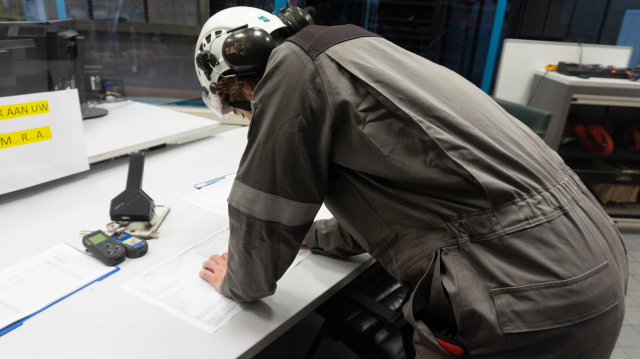
The Rescue Team Height Differences
The Gezamenlijke Brandweer is a partnership between the Municipality of Rotterdam and approximately sixty companies in the Rotterdam port and industrial area. The team members are trained as Specialist Height Rescuers. This rescue team uses climbing equipment, rope techniques and hoist systems to rescue victims. The deployment of this team is not without danger and there are strict requirements attached to it.
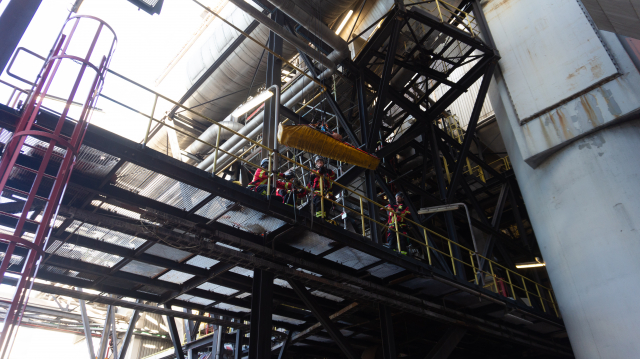
The assignment
The training has started and Tim explains the first assignment: the victim must be moved between two points using rope rescue techniques. The route is specific and complicated. This requires a good plan. The team receives no further instructions.
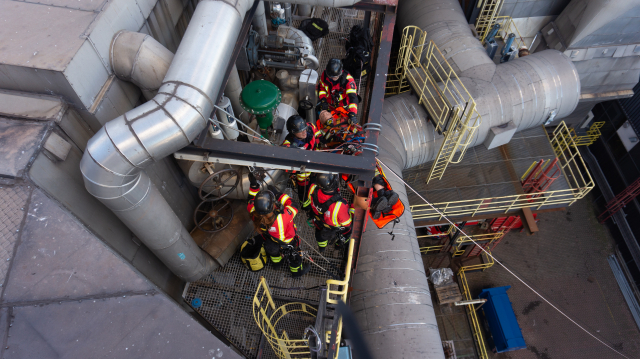
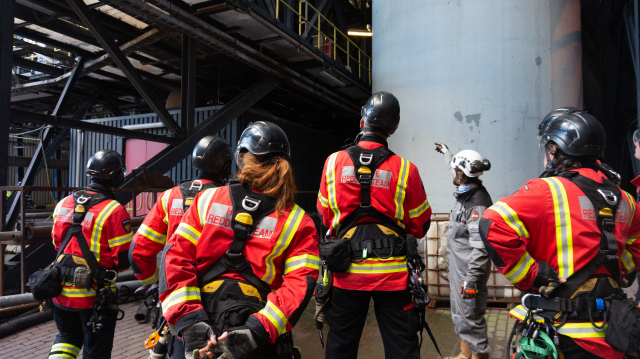
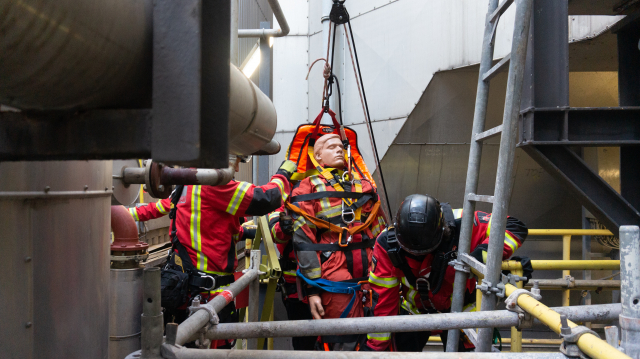
Gear-up
The team starts with the organization of smaller teams and equipment. Each fire fighter has two personal sets of material. These sets are used alternately in exercises and in real rescue situations. In addition to standard PPE such as the helmet, the set includes:
- Petzl Avao belt
- Petzl ID S as a belay and descend device
- Petzl Grillon positioning line of 2 meters
- Petzl Asap mobile fall protection
- Petzl Jane cow's tails
The joint material comes in pre-packed bags that are prepared for most scenarios. These bags are distributed among the teams. This includes:
- Rope
- Rigging plates
- Rope protectors
- Pulleys
- Additional carabiners
- Extra rope clamp
- Additional Petzl ID S
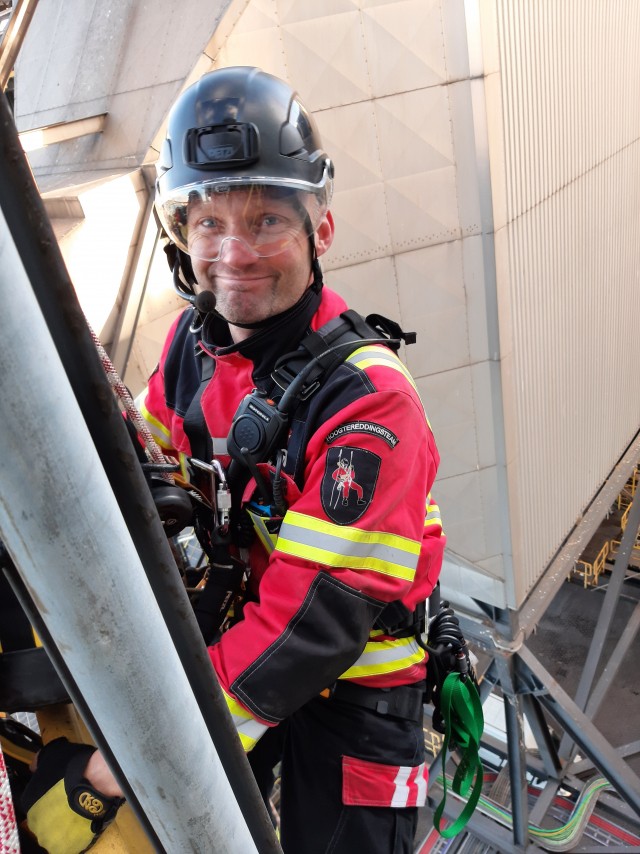
Let's go!
The commander draws a plan on a whiteboard and the team discusses the expected dangers. In addition, everyone does a last-minute risk analysis and buddy check. No time to lose, the teams are packed and checked quickly.
After the victim has been found and his life functions have been checked, the first part of the transport starts. The stretcher must rotate, passing under metal parts, around a hot pipe and over a railing. This creates challenges: where to place the anchor points? How does the rope stay tight so that the victim does not get trapped? How do you prevent the victim from swinging a pendulum and hitting a platform?
"You can turn the victim like that in the training center, but here he hits his head against a steel beam."

Team work
It is also hard work in the field of cooperation. The points for attention: which group size is the most efficient, how do you ensure that you understand each other despite the noise? How do you use everyone's knowledge and how can you be sure that someone has understood your instruction?
“You can have a victim descend quick and dirty or in the most complicated way. Try to make the best choice in the heat of the moment.”
The trainers
Rob de Boer and Tim Ypey form the coaching team. Tim is the trainer today and guides us through the factory. He started working at heights when he was 17. First in event construction as an event rigger and later in the industry. On his way to lunch, he shows where he worked here at the AVR factory for maintenance on one of the towers.
What is the challenge in this training?
The group is diverse, in terms of knowledge, experience and the way of learning: learning by doing, learning by seeing of learning through discussion after the exercize.
The learning objectives include:
- gain experience,
- recognize danger and properly assess situations,
- practice with leadership,
- looking forward,
- specific techniques such as rigging, technical drawing and descending.
The commander's job is to keep a close eye on everything and to ensure that every team member makes an active contribution. Of course, the trainer also sees points for improvement during the day. The points for improvement that emerge are: team structure, communication, finding the best route to the victim and choosing the location of anchor points.
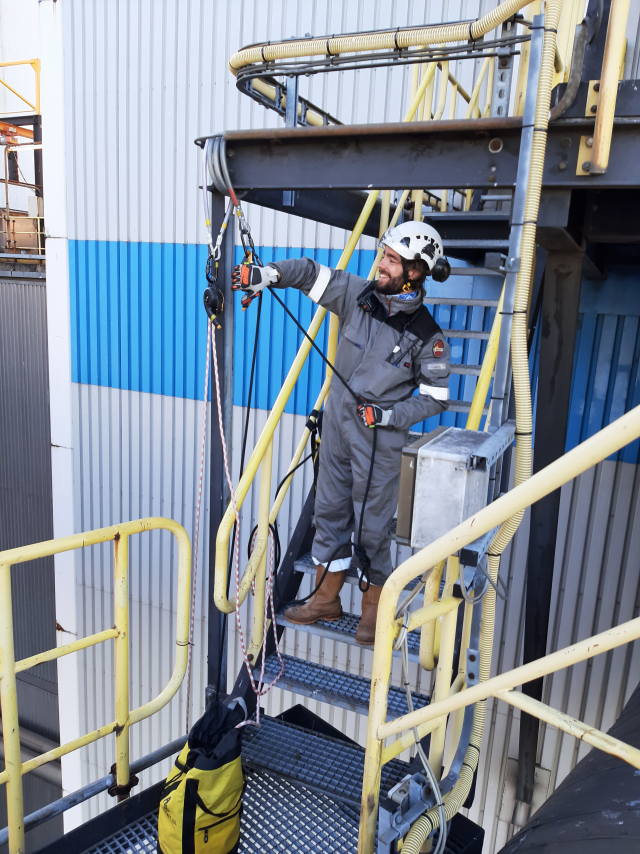
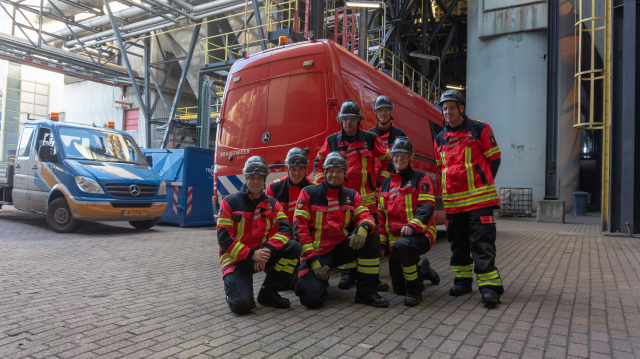
How do you become part of this rescue team? During lunch, team members tell what they did before they joined the team: a study integral safety, the NS control room, welder, light and sound technician or member of the voluntary fire brigade.
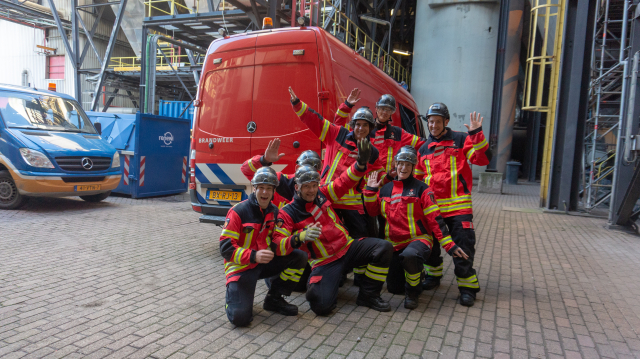
What the members of this team have in common is the drive to do the job 100% right. The rivalry with other rescue teams is evident, Tim is regularly asked whether the other teams did just as well. Would you like to know more about the Joint Fire Brigade? Take a look at their website.